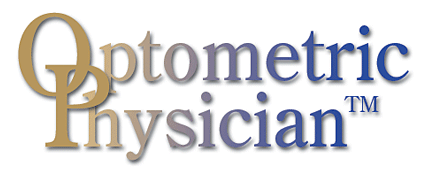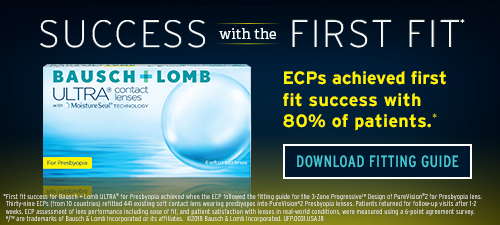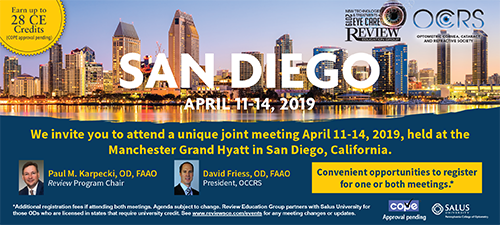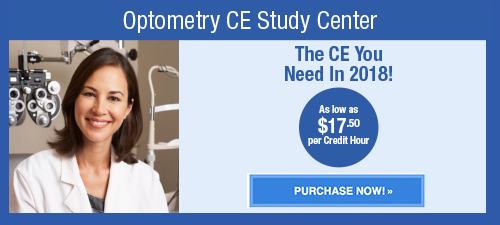
A
weekly e-journal by Art Epstein, OD, FAAO
Off the Cuff: 'Til the Landslide Brings Us Down…
I am still digging out from emails I received from colleagues about my recent piece on VSP and the changing professional landscape. Some were upset, others were worried and many asked for advice. Since I wrote the editorial, a California colleague shared that VSP had already quietly opened a retail outlet inside a CVS in Irvine as well as a brick and mortar store in LA. Soon after his note, I received a copy of a post from Opticians on Facebook that described how, within one to two hours of pulling a VSP authorization, patients receive an email directing them to the Eyeconic website where they are offered 25% off their copays for eyeglasses and contact lenses if they purchase through the site. Begin by refining what you now have and do whatever possible to increase your independence from the plans. That includes improving your web presence, enhancing patient communication, and taking a good look at your staff and practice environment. Strongly consider adding services and eye care products that improve patient function and quality of life. Remember that not everything you do or provide has to be covered by insurance. You will find that more and more services that we currently offer are, or soon will be, uncovered. Both you and your patients need to get used to the changing financial dynamic. In the future, please don’t ask me how to bill for something. Ask me how not to. Educate your patients about the medical services you currently offer and consider taking after hours and weekend call. This can be promoted on your website. With appropriate search engine optimization, it can help shift your patient care focus to more medical. If you are not participating in the primary medical insurance plans in your area, it’s time to get cracking. If you can’t figure out how to get on by yourself, hire a credentialing firm to assist. Expand your practice to incorporate specialty services. For some, those services might be squarely within traditional optometric practice like vision therapy. Consider incorporating new value-added technology like eyeBrain Medical’s neurolens system or Dr. Jim Rynerson’s BlephEx device. Dry eye, although a topic so hot that it’s become a confusing mess, can also provide an easy entry into medical eye care, provided you know what you are doing and how to do it. In a few weeks, I will be starting on an across-the-country dinner lecture series sharing exactly how to create a successful dry eye segment or practice. Generously sponsored by Contamac and hosted by Review of Optometry, it is completely free to attendees (I believe clinical knowledge should be shared and not sold). The first two lectures in Irvine, Calif., and NYC are completely sold out. Keep on the lookout for upcoming events. More to come…
|
|||||
 |
||
| We Can't Afford to Turn a Blind Eye to Myopia | ||||
This is a comissioned review article to highlight the current myopia epidemic and the sight- threatening complications associated with it. Data was gathered by performing a literature review by searching the PubMed database for recent articles regarding myopia.
Myopia is becoming increasingly prevalent throughout the world. It is an overlooked but leading cause of blindness, particularly among the working aged population. Myopia is often considered benign because it is easily corrected with glasses, contact lenses or refractive surgery. Traditionally, myopia has been classified into physiological and pathological subtypes based on the degree of myopia present. Higher levels of myopia are associated with increased risk of pathological complications, but it is important to note that there is no safe level of myopia. Even low levels of myopia increase the risk of retinal detachment and other ocular comorbidities. The most serious complication, myopic maculopathy, is the only leading cause of blindness without an established treatment and, therefore, leads to inevitable loss of vision in some myopes, even at a young age. Myopia is a potentially blinding disease. Authors wrote that, by identifying at-risk individuals and intervening before they become myopic, eye care practitioners can prevent or delay spectacle use, reduce the risk of the myriad of myopic complications and, thereby, improve the patient's quality of life and positively impact its socio-economic effects. |
||||
SOURCE: Bourke CM, Loughman J, Fltcroft DI, et al. We can't afford to turn a blind eye to myopia. QJM. 2019; Mar 26. [Epub ahead of print]. |
||||
 |
||
| Matrix Metalloproteinases in Keratoconus - Too Much of a Good Thing? | ||||
Keratoconus (KC) is a progressive, early-onset and often bilateral eye condition in which the cornea gradually weakens and bulges out, and in advanced cases may eventually become cone shaped. The available evidence suggests that it is a multifactorial disease with environmental and genetic contributions. Matrix Metalloproteinases (MMPs) are a family of 24 zinc-dependent proteases with the ability to degrade collagen and other extracellular matrix (ECM) proteins, which are important components of the cornea. During the past two decades, a growing body of evidence has accumulated suggesting a link between MMPs and keratoconus. This article aimed to summarize the published literature on the role of MMPs in the pathogenesis of KC.
MMP-driven ECM remodelling is thought to be a necessary step for cornea healing, but a fine balance in the expression of MMPs is essential in maintaining the integrity and transparency of the cornea and for its correct healing; an imbalance in this tightly regulated process may, in the long term, result in the progressive weakening of the cornea. There is extensive evidence that MMPs are upregulated in the corneal tissue and tears of KC patients, implicating dysregulated proteolysis in KC, with an increase in the level of some MMPs, particularly MMP-1 and MMP-9, confirmed in multiple independent studies. There is also evidence for a causative link between inflammation, which could result from the mechanical trauma due to contact lens wearing or/and eye rubbing, and the increased MMP production observed in KC. However, the precise role of specific MMPs in the cornea is still unclear, and the mechanisms causing their upregulation are mostly undiscovered. Further studies are required to verify the functional role of specific MMPs in KC development, and assess the genetic association between common MMP variants and risk of KC. As MMP inhibitors are in development, this information could potentially drive the discovery of new treatments for KC. |
||||
SOURCE: di Martino E, Ali M, Inglehearn CF. Matrix metalloproteinases in keratoconus - Too much of a good thing? Exp Eye Res. 2019 Mar 22. [Epub ahead of print] |
||||
 |
||
| Management of Ocular Allergy Itch with an Antihistamine-Releasing Contact Lens | ||||
A contact lens (CL)-based drug delivery system for therapeutic delivery of the antihistamine ketotifen was tested in two parallel, conjunctival allergen challenge-based trials. Both trials employed the same multicenter, randomized, placebo-controlled protocol. Test lenses were etafilcon A with 0.019 mg ketotifen; control lenses were etafilcon A with no added drug. Subjects were randomized into three treatment groups. Group 1 received a test lens in one eye and control lens in the contralateral eye; the eye chosen to receive the test lens was randomly selected in a 1:1 ratio. Group 2 received test lenses bilaterally, and group 3 received control lenses bilaterally. Allergen challenges were conducted on two separate visits: following lens insertion, the subjects were challenged at 15 minutes (to test onset) and 12 hours (to test duration). The primary endpoint was ocular itching measured using a zero to 4 scale with half-unit steps. Secondary endpoints included ciliary, conjunctival and episcleral hyperemia. The mean itching scores were lower for eyes wearing the test lens as compared to those that received control lenses, indicating that the test lens effectively reduced allergic responses. Mean differences in itching were statistically and clinically significant (mean score difference ≥1) at both onset and duration for both trials. This large-scale assessment (n=244) was the first demonstration of efficacy for CL delivery of a therapeutic for ocular allergy. Results were comparable to direct topical drug delivery and suggested that the lens/ketotifen combination could provide a means of simultaneous vision correction and treatment for CL wearers with ocular allergies. |
||||
SOURCE: Pall B, Gomes P, Yi F, et al. Management of ocular allergy itch with an antihistamine-releasing contact lens. Cornea. 2019; Mar 19. [Epub ahead of print]. |
||||
| News & Notes | |||||||||||||||
| Combination Outperforms Re-esterified Omega-3 Alone as DED Treatment Focus Laboratories announced findings that VitaSight O3+Maqui Dietary Supplement dietary supplements of re-esterified omega-3 fish oil and standardized maqui berry extract outperformed re-esterified omega-3 fish oil alone as a treatment for dry eye disease. The study was published in the March 20 online edition of Journal of Clinical & Experimental Ophthalmology. The randomized, interventional, placebo-controlled, comparative, pilot clinical study divided subjects into four groups. Individuals were evaluated by corneal staining, changes in tear osmolarity values, matrix metalloproteinase-9 levels, Schirmer’s test and tear breakup time. |
|||||||||||||||
| Zeiss Offers HFA3 Version 1.5 Software Zeiss’ new Humphrey Field Analyzer (HFA)3 version 1.5 software is intended to improve visual field testing by offering faster SITA, shorter tests and more efficient glaucoma management. SITA Faster 24-2C enables additional test points in the central ten degrees. In addition, tests can be integrated between multiple HFA3 instruments and HFA II-I, and various SITA tests can be combined in the Guided Progression Analysis report. Learn more.
|
|||||||||||||||
| Heidelberg Introduces GMPE Hood Glaucoma Report for Spectralis OCT
Heidelberg Engineering’s Hood Glaucoma Report is now available with a software update within the Spectralis OCT Glaucoma Module Premium Edition. The report highlights essential diagnostic information for a quick, but comprehensive assessment. Based on the diagnostic approach developed by Donald C. Hood, PhD, James F. Bender Professor of Psychology and Professor of Ophthalmic Science, Columbia University, the report also emphasizes the importance of high-resolution OCT B-scans and the unique anatomy of each eye, in the routine clinical diagnostic regimen. Furthermore, it enables clinicians to visualize functional and structural measurements along with high-resolution OCT B-scans, and to relate this information to 10-2 and 24-2 visual field points. The GMPE Anatomic Positioning System tailors scan placement and orientation to a patient’s anatomy, and the report is intended to serve as a robust diagnostic aid. Read more. |
|||||||||||||||
|
|||||||||||||||
|
|||||||||||||||
|
Optometric Physician™ (OP) newsletter is owned and published by Dr. Arthur Epstein. It is distributed by the Review Group, a Division of Jobson Medical Information LLC (JMI), 11 Campus Boulevard, Newtown Square, PA 19073. HOW TO ADVERTISE |





